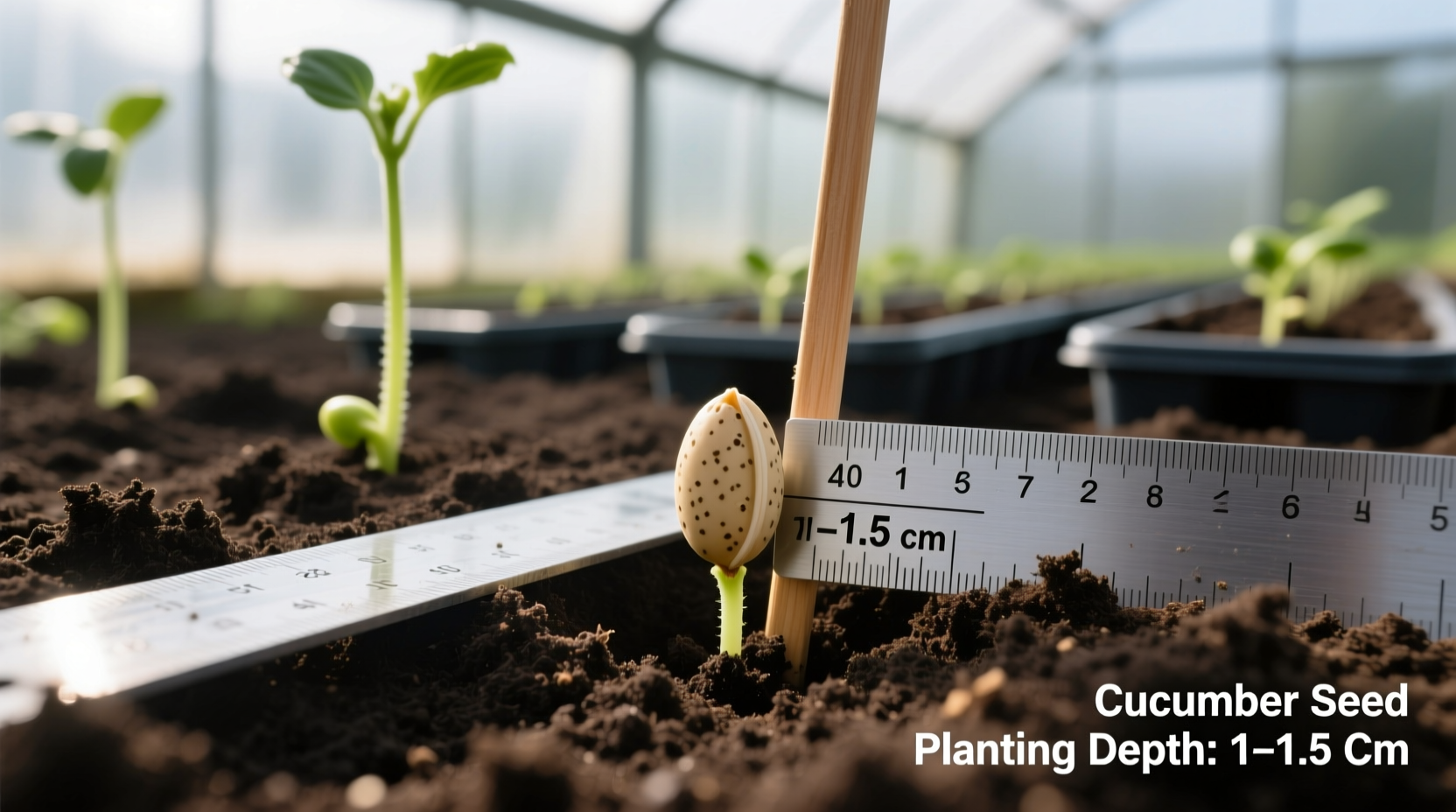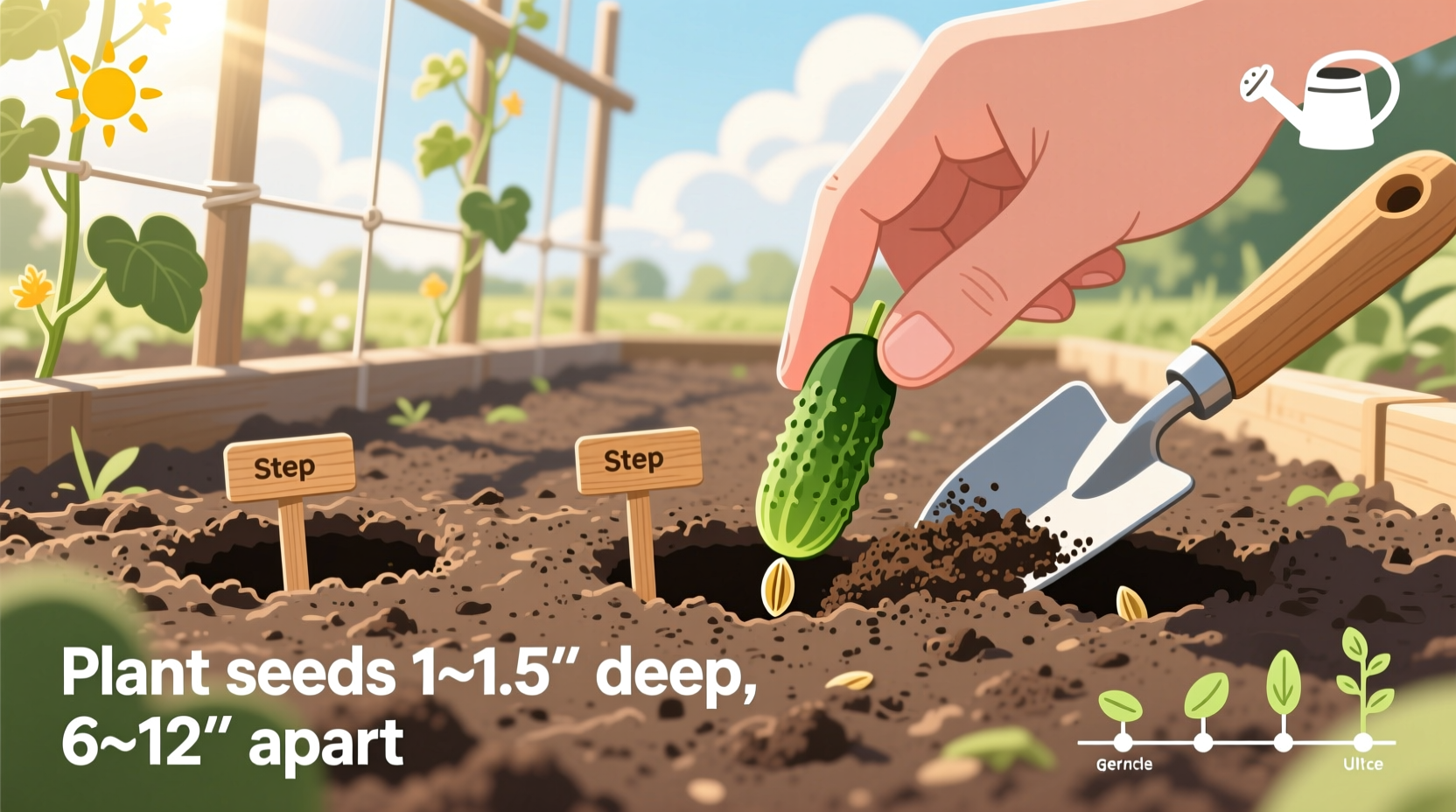Plant cucumber seeds 1 inch deep in warm soil (70-95°F) after last frost, spacing seeds 12-18 inches apart in full sun locations. Germination typically occurs in 7-10 days, with harvest ready in 50-70 days when cucumbers reach desired size. Proper soil preparation, consistent watering, and trellising support are essential for healthy growth and maximum yield.
Nothing beats the crisp, refreshing taste of homegrown cucumbers straight from your garden. Whether you're a first-time gardener or expanding your vegetable patch, planting cucumber seeds successfully requires specific timing, technique, and care. This comprehensive guide delivers exactly what you need to know to grow abundant, flavorful cucumbers—no guesswork required.
Why Cucumbers Thrive in Home Gardens
Cucumbers (Cucumis sativus) rank among the easiest vegetables to grow from seed, making them perfect for beginners. These fast-growing vines produce generously when given proper conditions, with most varieties ready for harvest in just 50-70 days after planting. The key to success lies in understanding their specific needs from seed to harvest.
Essential Pre-Planting Preparation
Skipping proper preparation guarantees disappointing results. Follow these critical steps before planting your cucumber seeds:
Timing Your Planting Perfectly
Cucumbers absolutely require warm soil and air temperatures. Planting too early in cold soil leads to poor germination or seed rot. Wait until:
- Soil temperature reaches at least 70°F (measured at 2-inch depth)
- Air temperatures consistently stay above 65°F
- At least 2 weeks after your last expected frost date
| USDA Hardiness Zone | Recommended Planting Window | Soil Temperature Target |
|---|---|---|
| Zones 3-4 | Mid-May to early June | 70-75°F |
| Zones 5-6 | Early to mid-May | 70-75°F |
| Zones 7-9 | Early April to May | 70-80°F |
| Zones 10-11 | Late February to April | 75-85°F |
This planting timeline follows USDA gardening recommendations based on decades of agricultural research. Planting outside these windows significantly reduces germination success rates.
Choosing the Right Location
Cucumbers demand full sun—at least 6-8 hours of direct sunlight daily. Select a spot that won't be shaded by buildings or taller plants as they mature. Avoid areas where cucurbits (cucumbers, squash, melons) grew in the previous two years to prevent disease buildup.
Soil Preparation for Maximum Growth
Prepare your planting area 1-2 weeks before sowing seeds:
- Clear all weeds and debris from the area
- Amend soil with 2-4 inches of compost or well-rotted manure
- Test soil pH (ideal range: 6.0-7.0); adjust with lime (to raise pH) or sulfur (to lower pH) if needed
- Create planting mounds or raised beds 4-6 inches high to improve drainage
According to University of Minnesota Extension, cucumbers perform best in loose, well-draining soil rich in organic matter. Heavy clay soils benefit from additional perlite or coarse sand to improve structure.
Step-by-Step Cucumber Seed Planting Guide
Follow these precise steps for optimal germination and early growth:
Direct Sowing Method (Recommended)
- Create planting holes: Make holes 1 inch deep, spacing them 12-18 inches apart in rows 3-6 feet apart
- Seed placement: Place 2-3 seeds per hole (you'll thin later)
- Cover seeds: Gently fill holes with soil, pressing down lightly
- Water thoroughly: Moisten soil without creating puddles
- Mark planting date: Note when you planted for future reference

Indoor Starting (For Shorter Seasons)
Start seeds indoors 2-3 weeks before transplanting if you have a short growing season:
- Use biodegradable pots to avoid root disturbance
- Plant seeds 1 inch deep in seed starting mix
- Maintain soil temperature of 80-85°F for fastest germination
- Provide 14-16 hours of grow light daily
- Transplant outdoors only after hardening off for 7 days
Research from Oregon State University Extension confirms that cucumber roots dislike disturbance, making direct sowing preferable when conditions allow. Indoor-started plants require careful handling during transplanting to prevent shock.
Critical Post-Planting Care
What happens after planting determines your harvest quality:
Watering Requirements
Cucumbers need consistent moisture but hate waterlogged roots:
- Water deeply 1-2 times weekly (1-1.5 inches total)
- Morning watering prevents fungal diseases
- Use drip irrigation or soaker hoses to keep leaves dry
- Mulch with straw or shredded leaves to retain moisture
Thinning Seedlings Properly
When seedlings have 2-3 true leaves (about 1-2 weeks after germination):
- Select the strongest plant in each group
- Cut weaker seedlings at soil level (don't pull to avoid disturbing roots)
- Final spacing should be 12-18 inches between plants
Supporting Vine Growth
Trellising cucumbers improves air circulation, reduces disease, and produces straighter fruit:
- Install trellis (5-6 feet tall) at planting time
- Train vines onto trellis when they reach 6-8 inches tall
- Use soft plant ties or garden twine for support
- Check ties weekly and adjust as vines grow
Troubleshooting Common Cucumber Problems
Address these frequent issues promptly:
Poor Germination
If seeds don't sprout within 10 days:
- Soil was too cold (below 60°F)
- Seeds planted too deep (over 1.5 inches)
- Soil dried out during germination
- Solution: Replant with fresh seeds when conditions improve
Yellowing Leaves
Causes and solutions:
- Nitrogen deficiency: Apply balanced organic fertilizer
- Overwatering: Reduce frequency, improve drainage
- Powdery mildew: Spray with 1:9 milk-to-water solution
Bitter Fruit
Bitterness comes from cucurbitacin compounds triggered by:
- Inconsistent watering
- Extreme temperature fluctuations
- Plant stress from pests or disease
- Solution: Maintain even moisture and harvest regularly
Harvesting for Best Flavor and Continuous Production
Harvest timing varies by variety but generally:
- Slicing cucumbers: 6-8 inches long, dark green
- Pickling cucumbers: 3-4 inches long
- Check plants daily once fruit appears
- Use sharp scissors or pruners to avoid vine damage
- Harvest in morning when cucumbers are crisp and cool
Regular harvesting encourages more production. According to Penn State Extension, leaving overripe cucumbers on the vine signals the plant to stop producing new fruit.











 浙公网安备
33010002000092号
浙公网安备
33010002000092号 浙B2-20120091-4
浙B2-20120091-4